- News
- Reviews
- Bikes
- Components
- Bar tape & grips
- Bottom brackets
- Brake & gear cables
- Brake & STI levers
- Brake pads & spares
- Brakes
- Cassettes & freewheels
- Chains
- Chainsets & chainrings
- Derailleurs - front
- Derailleurs - rear
- Forks
- Gear levers & shifters
- Groupsets
- Handlebars & extensions
- Headsets
- Hubs
- Inner tubes
- Pedals
- Quick releases & skewers
- Saddles
- Seatposts
- Stems
- Wheels
- Tyres
- Tubeless valves
- Accessories
- Accessories - misc
- Computer mounts
- Bags
- Bar ends
- Bike bags & cases
- Bottle cages
- Bottles
- Cameras
- Car racks
- Child seats
- Computers
- Glasses
- GPS units
- Helmets
- Lights - front
- Lights - rear
- Lights - sets
- Locks
- Mirrors
- Mudguards
- Racks
- Pumps & CO2 inflators
- Puncture kits
- Reflectives
- Smart watches
- Stands and racks
- Trailers
- Clothing
- Health, fitness and nutrition
- Tools and workshop
- Miscellaneous
- Buyers Guides
- Features
- Forum
- Recommends
- Podcast
review
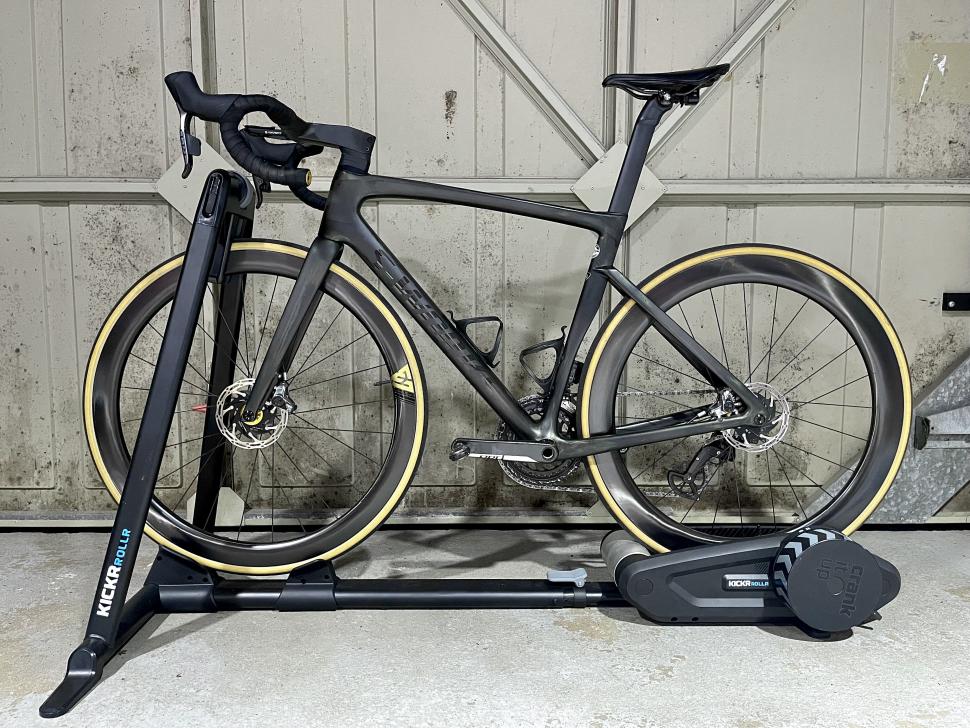 2022 Wahoo Kickr Rollr with bike.jpg
2022 Wahoo Kickr Rollr with bike.jpg£699.99
VERDICT:
Innovative hybrid of roller and smart trainer, but underperforms in various ways against either
Easy to set up
Easy to switch between bikes
Easy to ride on
Heavy and large
Doesn't measure your power
Front wheel flex is disconcerting
Wears out your rear tyre
Weight:
22,680g
Contact:
At road.cc every product is thoroughly tested for as long as it takes to get a proper insight into how well it works. Our reviewers are experienced cyclists that we trust to be objective. While we strive to ensure that opinions expressed are backed up by facts, reviews are by their nature an informed opinion, not a definitive verdict. We don't intentionally try to break anything (except locks) but we do try to look for weak points in any design. The overall score is not just an average of the other scores: it reflects both a product's function and value – with value determined by how a product compares with items of similar spec, quality, and price.
What the road.cc scores meanGood scores are more common than bad, because fortunately good products are more common than bad.
- Exceptional
- Excellent
- Very Good
- Good
- Quite good
- Average
- Not so good
- Poor
- Bad
- Appalling
The Wahoo Kickr Rollr aims to combine the benefits of turbo trainer and roller systems by clamping your front wheel and adding the ability to vary the resistance. It's easy to set up, ride feel is good and switching between bikes is a breeze, but the size and weight make it cumbersome to transport and store, and it doesn't measure power. Given it will also wear out your rear tyre it fares poorly against the direct-drive competition.
The Wahoo Kickr Rollr uses a pair of rollers matched to a 4.8kg flywheel to create a hybrid between regular rollers and wheel-on smart trainers. The Rollr comes in two parts: a large A-frame to clamp your front wheel; and the flywheel, rollers and electrical gubbins for the rear. Unlike many of the latest trainers though, the Rollr doesn't actually have the capability of measuring power, and instead relays the data from a standalone power meter.
> Buy now: Wahoo Kickr Rollr from Wiggle for £699.99
Whilst the idea of rollers with resistance isn't a new one, it is one of the only mainstream systems to use a weighted flywheel, rather than magnetic resistance as with the Feedback Sports Omnium (£400.00) or the Elite Arion Mag Parabolic Resistance Rollers (£299.99).
The box is pretty huge – you could probably actually fit inside it – but the system very easy to set up. The two main components connect/adjust via a quick release system, and the only tool needed is a Philips screwdriver – and that's included. As you don't have to do any major assembly, fit a cassette or even take the wheels off your bike, the whole process takes minutes. As with most turbo trainers you need quite a large flat space to use it on, though as the Rollr weighs nearly 23kg and is 160cm long, you will want to build it in place and leave it there.
Putting the bike on is also extremely easy; pop the back wheel on the rollers, adjust the QR until your front wheel sits comfortably in the cup, and then tighten up the tyre gripper at the top of the A-frame. This can accommodate a maximum tyre width of 53mm and doesn't have a minimum size – road and TT bikes are no issue, most gravel bikes will be fine, and even some mountain bikes will fit.
As long as you're running a front tyre less than 53mm wide it really is a 'put your bike on and ride' solution, with no gear indexing or searching for adaptors required. This makes the Rollr ideal for households with multiple people (and lots of space) wanting to indoor train.
As someone who lives in a household with three turbos permanently set up, and with a variety of 10, 11 and 12 speed bikes, this sounds like the perfect solution. Sadly, not all of my bikes have power meters, and this leads me to one of the Rollr's pitfalls.
Meter not a feature
The Rollr is not capable of measuring power by itself, which seems a little odd considering the cheaper Kickr Snap manages it and uses a similar interface between wheel and trainer. Instead, you have to pair the device to your existing power meter using the Wahoo app.
This does work seamlessly, at least, and the Rollr can then be connected to the training software of your choosing as a controllable (smart trainers that can vary their resistance automatically are 'controllables'), despite the fact it can't actually measure power. Cleverly (and uniquely), it will relay data from your power meter instead of leaving you to connect that separately, which can be useful in freeing up connections.
For example, I use Zwift on an Apple TV, and can only add two Bluetooth devices (it doesn't have ANT+). If my power meter had to use its own connection, I would be unable to then add both my HR monitor and the Rollr.
The Rollr is also available as a bundle with the Powrlink Zero pedals if you really want to buy in to the Wahoo ecosystem.
When you've connected a power meter the coloured LED indicators next to the flywheel show solid blue or red, depending on whether via ANT+ or Bluetooth, slow blinking for searching for a device and rapid blinking indicates a connection is in progress.
Despite the actual ANT+ or Bluetooth connection process being relatively simple – a slow-blinking LED for searching, fast for connecting and solid for connected – the practicality of the Rollr being compatible with lots of different bikes is heavily hampered each one needing its own power meter. Faffing around swapping gadgetry before a session on a dark, wintery evening just doesn't appeal to me, personally.
Ride feel
The A-frame holds you steady and, whereas if I get distracted on traditional rollers I tend to end up in a heap, there are no such issues with the Rollr. The back wheel can move from side to side too – not that far – and at first it feels a little odd, though once I was used to it I liked it – it's more like real riding, perhaps, and I found during long intervals my rear was less sore.
While this system is louder than the direct drive Kickr I usually use, those do have a reputation for being exceptionally quiet, and compared to other rollers the Wahoo fares very well. If you really spin up flywheel there's a slight vibration, which makes me think something isn't balanced perfectly.
> 10 best home trainers for 2022 – get fit indoors
The two rollers spin a 4.8kg flywheel (way smaller than the 7.3kg flywheel in the latest Kickr V5, but close to the 5.4kg flywheel in the Kickr Core). As such the Rollr is capable of generating up to 1,500 Watts of resistance, and can simulate gradients up to 10%. For most riders that will be more than sufficient. The 1500W figure blows similar roller systems out the water: for example, the Feedback Sports Omnium only delivers progressive resistance, while the Elite Arion only offers 520 Watts.
Note that the Rollr is able to simulate a climb up to 10% for any rider, at any realistic flywheel speed, as long as they don't go over the trainer's capability of 1500W – which is extremely unlikely for us mere mortals.
Although many of us will ride hills over 10% in the virtual world, this will still be able to simulate them, despite the figure suggesting otherwise. Think of that 10% as a worst possible case scenario; a heavy, high-power rider at speed is basically the worst case scenario for the trainer, as it requires so much more resistance.
Lighter riders will not feel any greater resistance, however; they're just less likely to meet the turbo's limits, and the trainer can therefore actually simulate more than 10% for everyone but the very strongest and heaviest riders.
For me, a 73kg Cat 2, I found this enough for nearly everything I could find in Zwift, but high-power riders might find the direct drive alternatives more suitable for big efforts. For instance the Core simulates gradients up to 16% and up to 1,800 Watts of resistance, and the V5 does 22% with a 2,200W capability.
I found it worked much better on Zwift with the trainer difficulty cranked up to 100%; less than 50% and resistance changes appear less noticeable than with a heftier direct drive setup.
No flex please, we're British
The 165cm x 79.5cm platform is very wide and so provides a sturdy base for sprint efforts – so sturdy, in fact, it causes a fair amount of flex in your front wheel as you move around during hard efforts. That can be a bit disconcerting when they're your best carbon wheels.
I actually set up a GoPro to film my front wheel as I sprinted in real life (as in, on the road) to see if it flexed that much in normal use, and the answer was no. It didn't flex anywhere near as much. This in turn makes me worry it might end up exceeding what the wheel designers have allowed for.
[Update: Zipp is the first manufacturer to say that using systems such as the Rollr which clamp the front and leave the rear wheel free to move will void the warranty. Read more here]
At the rear it's the usual problem instead – you'll wear out tyres. You could of course go use dedicated trainer tyre, but if you're changing wheels (or worse, just tyres) to use the system then that completely defeats its purpose. For the remainder of testing, I opted for a set of old training wheels which then flexed even more, because at least they had a cheaper rear tyre on them...
> 12 reasons why you should buy, and use, a power meter
Throughout testing, the pairing to online training platforms such as Zwift, The Sufferfest, TrainerRoad, Rouvy, RGT and so on was reliable and consistent. You can also use the Kickr Rollr without mains power as a standalone roller. Obviously it then becomes a dumb trainer, but this could be useful for pre-race warmups... or so I thought.
At a rather massive 22.7kg and notably bulky even when split in two, it's hardly portable. In most instances, it's far easier to transport a turbo, though I can see the Rollr being very useful in the centre of a velodrome or at the start of a TT.
The size also makes storage a bit of an issue. The two parts take up the least space when up on end, but this appears to have been overlooked during the design process as they just want to topple over.
Value
At £699.99 there are two ways of looking at the Kickr Rollr; it's either a very expensive set of rollers, or a mid-priced smart trainer. Either way, I would expect it to be able to measure power at that price. For most people, I think the identically priced Kickr Core would be the better buy.
As mentioned earlier, to get the most out of the Rollr you really need a power meter; the bundle with the Powrlink Zero pedals comes in at £1,199.99, saving £50 over the two things separately (the pedals are £549.99). However, you could get yourself a Wahoo Kickr Core (£699.99) for home and some decent rollers like the Tacx Galaxia Advanced Roller Trainer (£196.60) to chuck in the car for race day, and still spend under £1,000.
Overall
While in a saturated market its innovative approach is very refreshing, the Wahoo Kickr Rollr isn't going to appeal to everyone. There are too many sacrifices when compared similarly priced competition – even from Wahoo's own range – regarding its weight, size, lack of power measurement, resistance levels and tyre wear.
It does seem ideal for shops doing bike fits, velodrome warm-ups or at TT events, in any of these environments it will do a great job – providing you also have lots of power meters or are at least willing to swap them about.
Verdict
Innovative hybrid of roller and smart trainer, but underperforms in various ways against either
road.cc test report
Make and model: Wahoo Kickr Rollr Smart Bike Roller
Size tested: n/a
Tell us what the product is for and who it's aimed at. What do the manufacturers say about it? How does that compare to your own feelings about it?
Wahoo says, "KICKR ROLLR combines the convenient training experience and natural ride feel that only rollers can provide with the performance features and connectivity of a smart trainer. Featuring a dual-roller design, app controlled resistance, enhanced safety features, and adjustability that makes moving between multiple bikes a snap."
Tell us some more about the technical aspects of the product?
From Wahoo:
Dimensions: 31.5"(80 cm) wide on the front end
12"(30.5 cm) wide on the rear end
58"(147.5 cm) long in the shortest wheelbase configuration
67"(170 cm) long in the longest wheelbase configuration
Weight (unboxed): 50 lb
Resistance Type: Electromagnetic
Accuracy: Accuracy of external power meter
Wireless Software Updates: Yes
3rd Party Power Meter Support: Powermeter Connect
Connectivity: ANT+, ANT+ FE-C, and Bluetooth
Devices: iOS, Android, PC (Mac and Windows)
Max User Weight: 250 lb
Power Requirements: 100-240V5A 50-60 Hz
Flywheel Weight: 10.5 lb
Maximum Simulated Grade: 10%
Maximum Power Output: 1500W
Rate the product for quality of construction:
8/10
It is well made, if not quite perfectly balanced as there was a vibration at full tilt.
Rate the product for performance:
5/10
For some the fact you can switch bikes so easily will be massive, and some won't require portability, but for most this is heavily compromised.
Rate the product for durability:
8/10
Appears built to last.
Rate the product for weight (if applicable)
4/10
It's really heavy and not in useful places like the flywheel, though it does make it feel robust.
Rate the product for comfort (if applicable)
8/10
It is nice to ride on; the floaty rear-wheel feeling is more realistic than most static setups.
Rate the product for value:
4/10
The lack of power recording is unheard of at this price.
Tell us how the product performed overall when used for its designed purpose
The connections are reliable, it's very easy to set up and the ride feel is good. However, it's noisier than direct drives and flexes your front wheel during efforts.
Tell us what you particularly liked about the product
It is very easy to set up and get riding.
Tell us what you particularly disliked about the product
It takes up so much space.
How does the price compare to that of similar products in the market, including ones recently tested on road.cc?
Most of the rollers we've tested cost between £200 and £300. For example, the Minoura FG220 is now £289 and also features a solution to stop you falling off. You would expect the addition of resistance to increase the price though, and indeed the Kreitler Rollers cost £570 with the additional flywheel. The Rollr does offer some performance benefit over these as its resistance is controllable, but it's also more expensive, and against the direct-drive offerings capable of higher resistances and gradient simulations, it fares badly on price.
Did you enjoy using the product? Yes
Would you consider buying the product? No
Would you recommend the product to a friend? Some
Use this box to explain your overall score
In some situations it's a very good system that allows quick swaps between bikes. However, there are too many compromises when compared to the direct-drive competition – such as the lack of power measurement, its greater noise and size, and the fact it wears out your rear tyre – for it to score any higher.
About the tester
Age: 23
I usually ride: Specialized venge pro 2019 My best bike is:
I've been riding for: Under 5 years I ride: Every day I would class myself as: Expert
I regularly do the following types of riding: road racing, time trialling, cyclo cross, commuting, club rides, sportives, general fitness riding, mtb,
Jamie has been riding bikes since a tender age but really caught the bug for racing and reviewing whilst studying towards a master's in Mechanical engineering at Swansea University. Having graduated, he decided he really quite liked working with bikes and is now a full-time addition to the road.cc team. When not writing about tech news or working on the Youtube channel, you can still find him racing local crits trying to cling on to his cat 2 licence...and missing every break going...
Latest Comments
- andystow 1 hour 43 min ago
Just wait until he gets the bill for overstaying that long!
- thrawed 2 hours 19 min ago
The leds on the bolt v1 were great, but when they added colour datafield backgrounds that worked exactly like the leds they became a bit redundant.
- Bikebeer77 2 hours 57 min ago
Jeebus, another one sipping from the Trump Koil-Aid fountain! The drugs DO work!
- hawkinspeter 4 hours 25 min ago
PKD foresaw it, though his novel was based on a different outcome of WWII, not the precursor to WWIII. Maybe the Idiocracy film is a closer fit?
- Hirsute 4 hours 30 min ago
I would have had someone standing outside with a big placard with...
- Tom_77 4 hours 36 min ago
Olympic gold medallist would remove name from cycle path if quarry plans go ahead...
- OnYerBike 6 hours 27 min ago
@Sredlums: I'm not sure I follow your logic. If someone grabs your helmet twists it, then the reason it doesn't feel good is because the outer is...
- Rapha Nadal 6 hours 28 min ago
Coming to the mid-paced Saturday club ride soon.
- Secret_squirrel 7 hours 23 min ago
Interesting review. I have the Bont MTB+ and they are the most comfy cycling shoes I have ever worn. I use them with a Superfeet Green Insole...
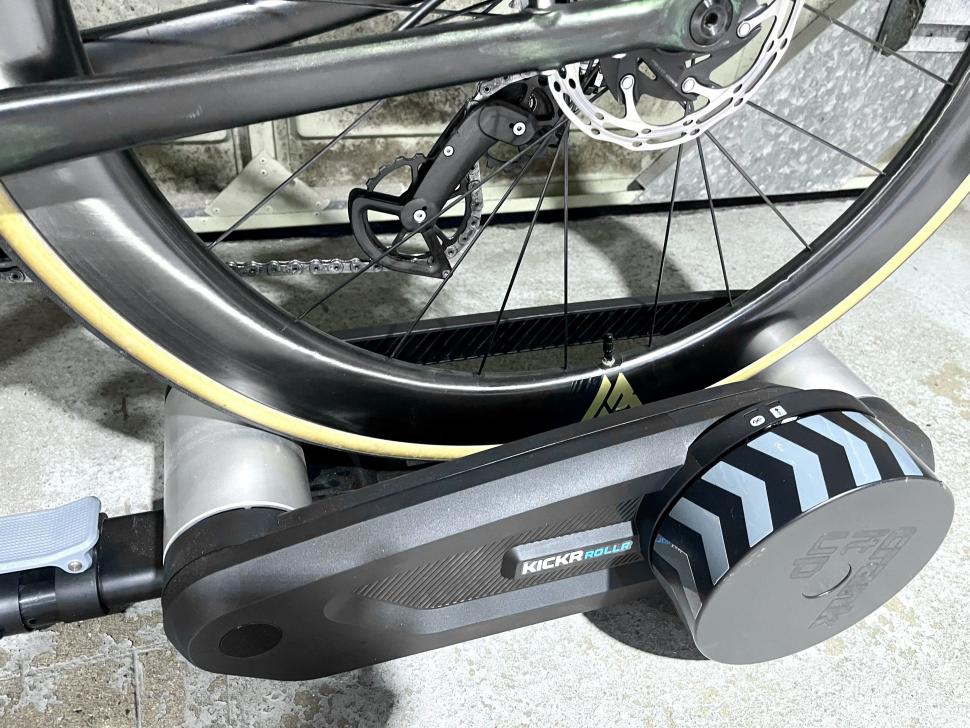
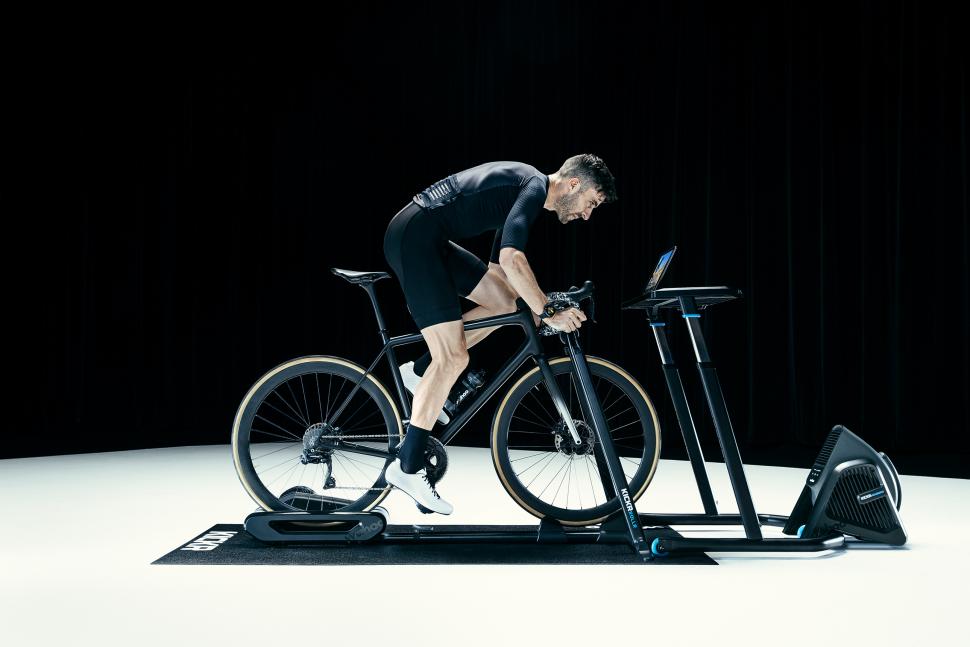

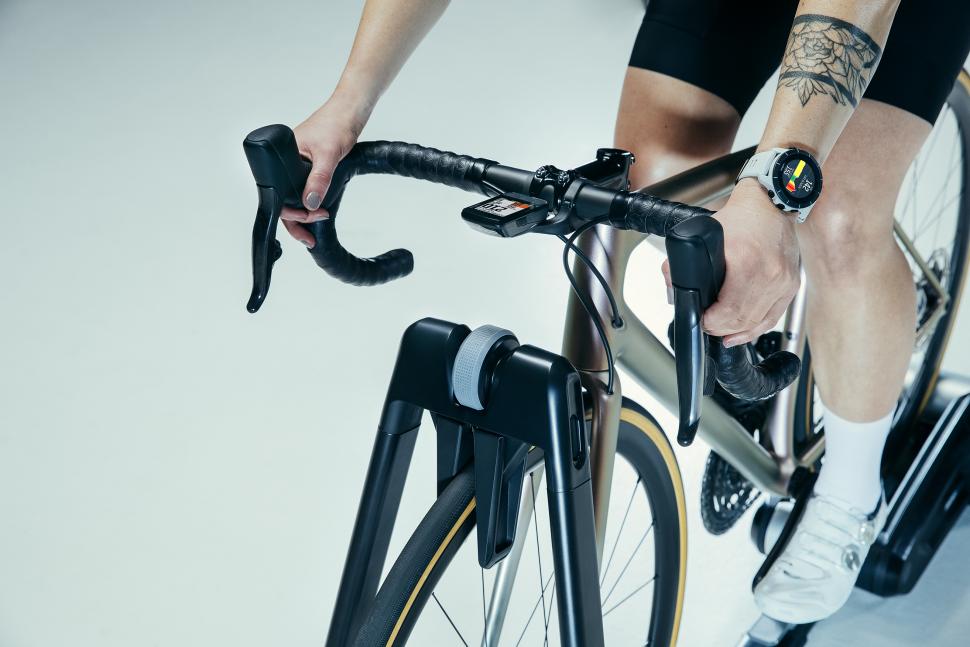
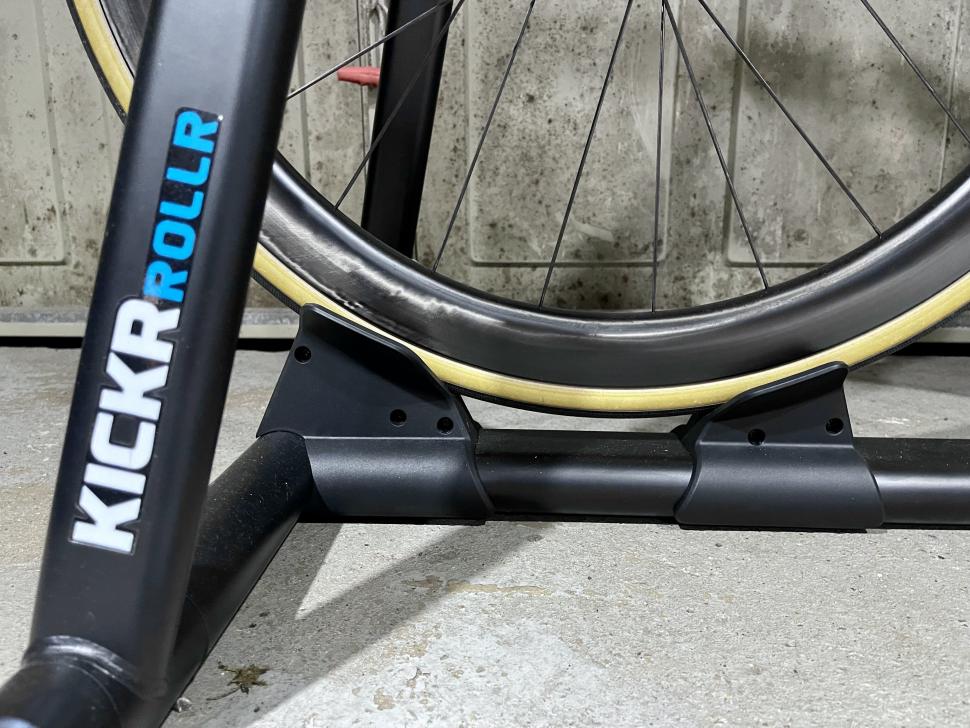
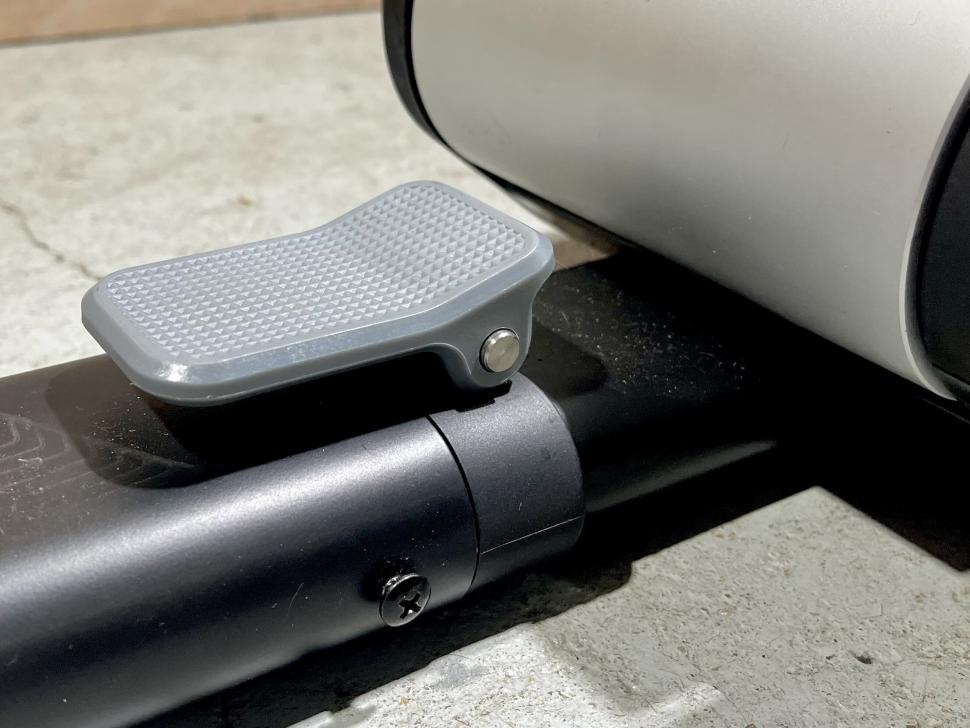

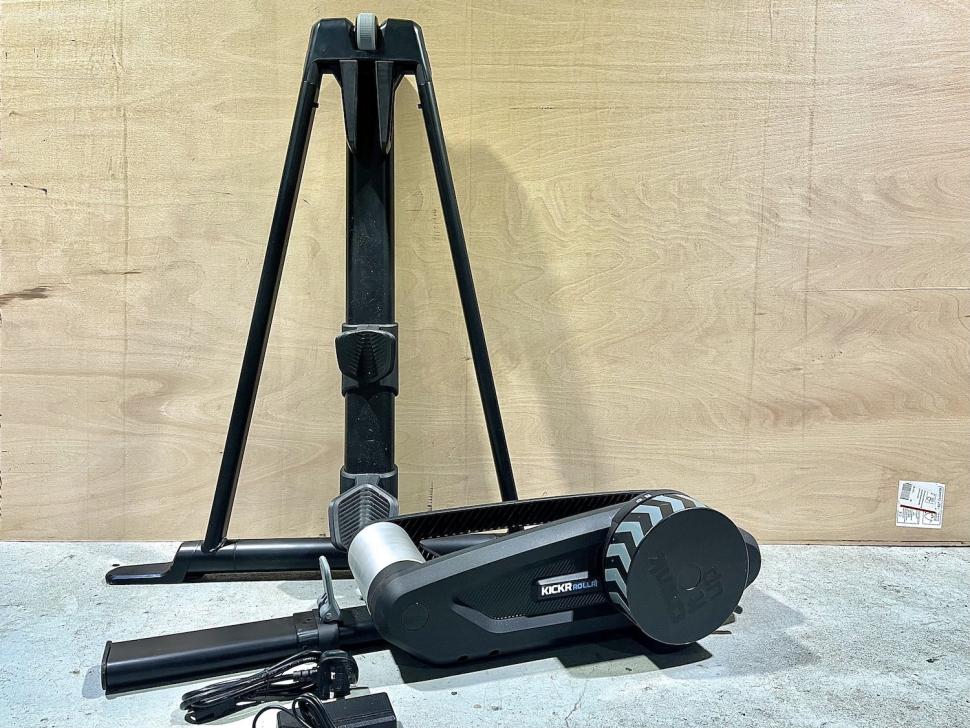
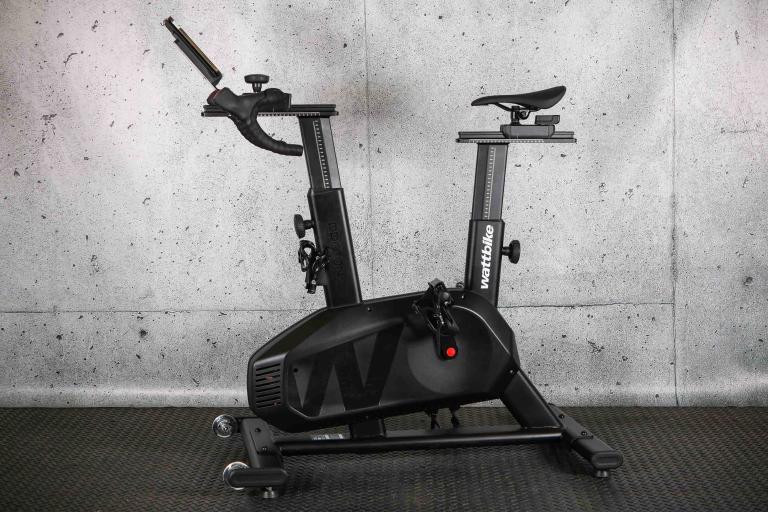
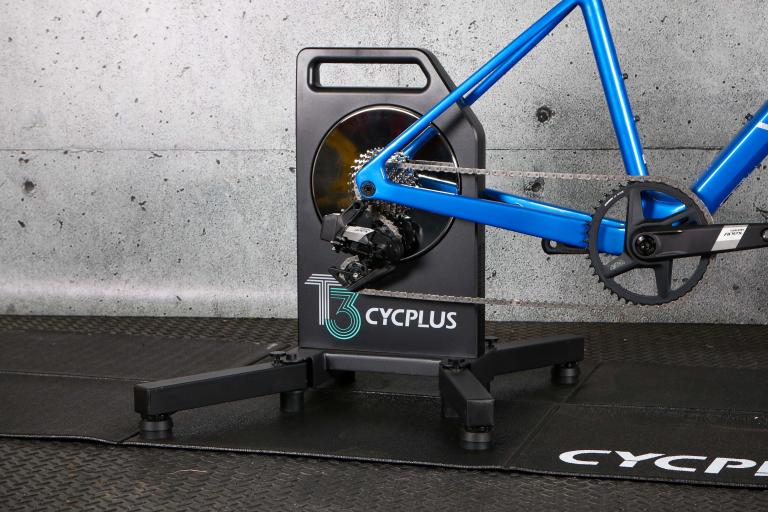
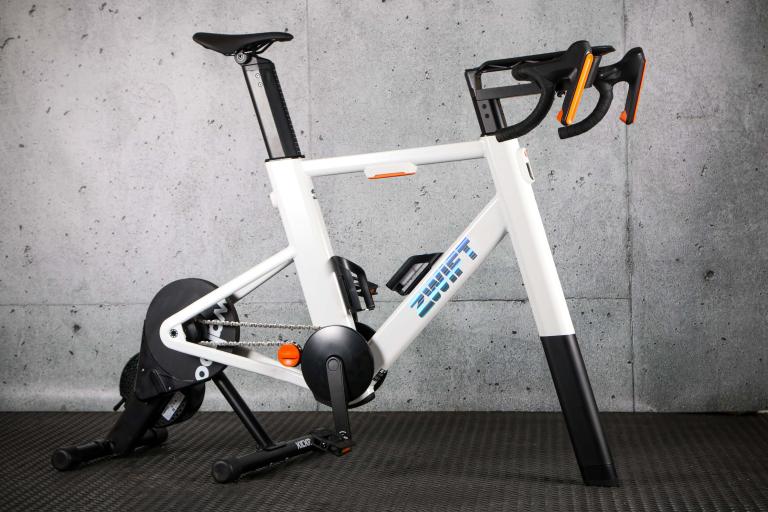

Add new comment
8 comments
But who in their right mind would use this with a proper expensive tyre? There are special tyres for turbos after all - e.g. Vittoria makes them. Wouldn't dream of using it with a GP 5000 or similar...
I think you've hit the nail on the head with the flawed solution that is this trainer. It's supposed to be a "put the bike on and go" option. I used to have a wheel-on trainer (Tacx Bushido) and kept a spare wheel and cassette with a Tacx trainer tyre. All good but by the time I'd faffed around with the wheel change, tyre pressure, calibration, etc it became a chore. Then I got a wheel-off direct drive one (Tacx Neo 2T), less faff but still time consuming. Then I got a smart bike (Tacx Neo Bike) and it's had more use in the last 6 months than any of my other indoor trainers combined so I'm not convinced by these smart rollers. Just my opinion and of course others may differ.
Zipp has already come out and said using this trainer will invalidate your warranty, I would expect other brands not to be far behind on declaring the same. It's a bad design.
I do think it's weird that tyre wear alway gets a shout in these reviews. If you had no turbo it would be the actual road wearing it out.
But the road doesn't generate the heat friction you get off a wheel-on trainer, my first Bkool wheel-on smart trainer could eat through a Conti 5000 in under 500 miles. Depends on the trainer and construction I think, that was a steel roller, my current Elite Tuo has an elastogel roller that seems to be very kind to the tyre.
The worst damage is because the wheel is often clamped with some force into the trainer, so the load on the rear wheel is greater than normal.
I had to replace bearings and freehub in a rear wheel that a customer had literally cooked - premature bearing failure led to massive overheating which destroyed the freehub.
That same extra pressure, operating on a small area affects the tyre which is typically not designed for that style of usage.
Nearly as bad as all those knackered headset bearings you get off indoor trainers.
The big problem is the squaring off of rear tyres - can make them pretty dodgy when you start going back out on the road
Roads dont wear tyres out like the way turbos do, tyres get very warm on turbos and chunk lots of tyre marbles off, easily 500miles on a turbo wrecks a tyre much more easily than 500miles on the road would, barring punctures of course